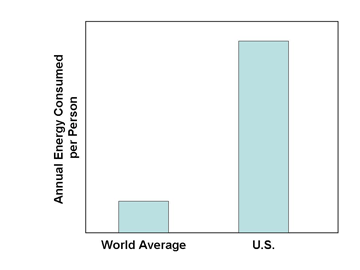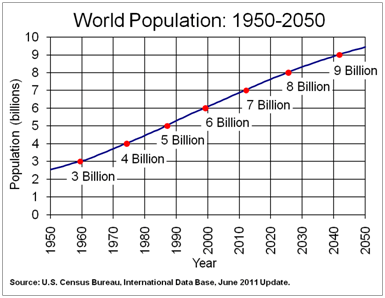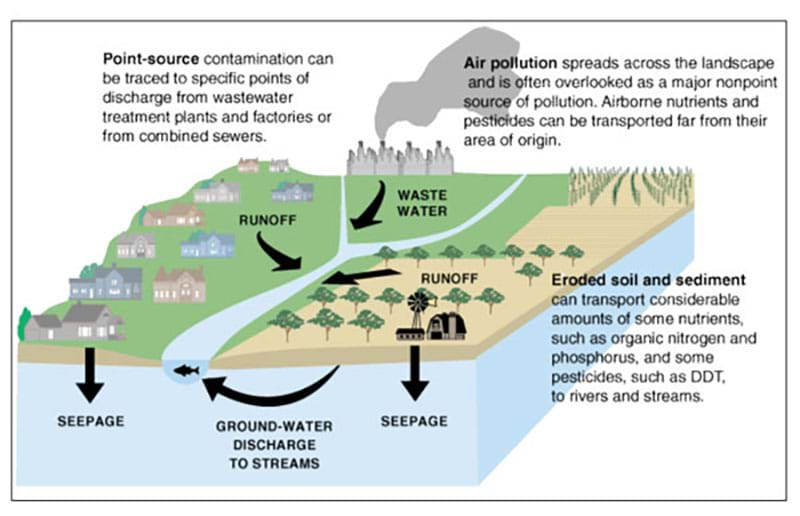Quick Look
Grade Level: 8 (6-8)
Time Required: 45 minutes
Expendable Cost/Group: US $0.00
Group Size: 28
Activity Dependency:
Subject Areas: Physical Science, Science and Technology
NGSS Performance Expectations:

| MS-ESS3-4 |

Summary
In an active way, students discover a few critical facts about how we use energy and how much energy we use. Each student has a "clue," some of which are pertinent energy facts and others are silly statements that are clearly unrelated to the topic. Students mingle and ask each other for clues until they have collected all the facts they need. This provides a more interactive way to communicate energy statistics, compared to a lecture and introduction with board work. The goal is to introduce students to some key terms and issues associated with energy as a necessary prerequisite for the remainder of the unit.Engineering Connection
Engineers have a critical role to play in harnessing energy resources for use by society. They are among the professionals who have enabled our world-wide mobility, communication, safe food storage etc. These technological advances have benefitted society, but also consume a lot of energy. Developed countries, such as the US, have benefitted from engineered technologies, but now function at unsustainable energy consumption amounts. Engineers must now also contribute to a solution by making tools and devices more energy efficient and developing ways to harness renewable energy resources.
Learning Objectives
After this activity, students should be able to:
- Provide a definition of our "energy crisis" that includes aspects of dwindling supply, over consumption and health impacts from pollution.
- Construct an argument for how increases in human population and per-capita consumption of natural resources impact Earth's systems.
Educational Standards
Each TeachEngineering lesson or activity is correlated to one or more K-12 science,
technology, engineering or math (STEM) educational standards.
All 100,000+ K-12 STEM standards covered in TeachEngineering are collected, maintained and packaged by the Achievement Standards Network (ASN),
a project of D2L (www.achievementstandards.org).
In the ASN, standards are hierarchically structured: first by source; e.g., by state; within source by type; e.g., science or mathematics;
within type by subtype, then by grade, etc.
Each TeachEngineering lesson or activity is correlated to one or more K-12 science, technology, engineering or math (STEM) educational standards.
All 100,000+ K-12 STEM standards covered in TeachEngineering are collected, maintained and packaged by the Achievement Standards Network (ASN), a project of D2L (www.achievementstandards.org).
In the ASN, standards are hierarchically structured: first by source; e.g., by state; within source by type; e.g., science or mathematics; within type by subtype, then by grade, etc.
NGSS: Next Generation Science Standards - Science
| NGSS Performance Expectation | ||
|---|---|---|
|
MS-ESS3-4. Construct an argument supported by evidence for how increases in human population and per-capita consumption of natural resources impact Earth's systems. (Grades 6 - 8) Do you agree with this alignment? |
||
| Click to view other curriculum aligned to this Performance Expectation | ||
| This activity focuses on the following Three Dimensional Learning aspects of NGSS: | ||
| Science & Engineering Practices | Disciplinary Core Ideas | Crosscutting Concepts |
| Construct an oral and written argument supported by empirical evidence and scientific reasoning to support or refute an explanation or a model for a phenomenon or a solution to a problem. Alignment agreement: | Typically as human populations and per-capita consumption of natural resources increase, so do the negative impacts on Earth unless the activities and technologies involved are engineered otherwise. Alignment agreement: | Cause and effect relationships may be used to predict phenomena in natural or designed systems. Alignment agreement: All human activity draws on natural resources and has both short and long-term consequences, positive as well as negative, for the health of people and the natural environment.Alignment agreement: Scientific knowledge can describe the consequences of actions but does not necessarily prescribe the decisions that society takes.Alignment agreement: |
Common Core State Standards - Math
-
Fluently add, subtract, multiply, and divide multi-digit decimals using the standard algorithm for each operation.
(Grade
6)
More Details
Do you agree with this alignment?
-
Use ratio reasoning to convert measurement units; manipulate and transform units appropriately when multiplying or dividing quantities.
(Grade
6)
More Details
Do you agree with this alignment?
-
Fluently divide multi-digit numbers using the standard algorithm.
(Grade
6)
More Details
Do you agree with this alignment?
International Technology and Engineering Educators Association - Technology
-
Analyze how different technological systems often interact with economic, environmental, and social systems.
(Grades
6 -
8)
More Details
Do you agree with this alignment?
-
Analyze how the creation and use of technologies consumes renewable and non-renewable resources and creates waste.
(Grades
6 -
8)
More Details
Do you agree with this alignment?
State Standards
New York - Math
-
Fluently add, subtract, multiply, and divide multi-digit decimals using the standard algorithm for each operation.
(Grade
6)
More Details
Do you agree with this alignment?
-
Fluently divide multi-digit numbers using the standard algorithm.
(Grade
6)
More Details
Do you agree with this alignment?
-
Use ratio reasoning to convert measurement units; manipulate and transform units appropriately when multiplying or dividing quantities.
(Grade
6)
More Details
Do you agree with this alignment?
New York - Science
-
Construct an argument supported by evidence for how increases in human population and per-capita consumption of natural resources impact Earth's systems.
(Grades
6 -
8)
More Details
Do you agree with this alignment?
Materials List
- Student Handout, show class via overhead projector (alternatively, make copies, one per student)
- List of Clues, cut apart into slips of paper, each with a different "clue," one each per student (23 provided on list)
Worksheets and Attachments
Visit [www.teachengineering.org/activities/view/cla_activity1_energy_intelligence] to print or download.Introduction/Motivation
We currently are highly dependent on fossil fuels for most of our energy supply – energy that is instrumental for maintaining our current society. However, our supply of nonrenewable energy sources is being depleted and may even reach a point in which the limited supply adversely affects people's lives. The rapid depletion of fossil fuels stems in part from our current energy use habits. For example, the average American uses six times the energy as the global average, per person. In the US, this translates to the use of one million dollars worth of energy every minute!
Introducing these statistics and the importance of energy in our lives can be accomplished with this activity. It is critical for students to appreciate the importance of energy in their lives early in the unit. Starting the class with questions like "How did you get to school today?" or "What energy did you use this morning to get ready for school?" and "Where did that energy come from?" are good ways to get the students thinking about energy topics. Also ask the students if they have observed automobiles which are dirtier than others? This activity is an excellent way to begin this discussion.
Procedure
Before the Activity:
Print out the List of Clues and cut it apart into individual slips of paper, one clue per slip. Only five "clues" have pertinent energy facts; the rest are unrelated to the topic. Fold the slips so students do not see what is written on them. Make enough to give each student his/her own clue. If the class is larger than ~20 students, reduce the time for this activity by dividing the class in half and having each half work together to find the critical clues.
With the Students:
- Pass out EIA letters and clues-information slips (Make sure the slips of paper are folded and that the important facts are scattered around the room and not in a group).
- Explain that five informants in the room have crucial information and the rest are decoys.
- Students must find the five crucial facts, however they must use a code phrase to get the information. For example, Joey approaches Maria and says "Not Every Cat Hates Mice." Mary then responds with what is written on her slip of paper even if it is not important.
- As they go around the room, each student should write down the facts they deem important.
- As a class, review the informants' facts:

- Fossil fuels are depleted at a rate that is 100,000 times faster than they are formed. What does this mean? What do you think will happen to the supply of fossil fuels within our lifetime? (Consider introducing the term "peak oil" at this point; it will be covered in a later unit.)
- Approximately 30,000 lives are cut short in the U.S. each year due to pollution from electricity production. What kind of pollution have you seen from electricity and energy production? (NOx, SOx, particulate matter (including soot), volatile organic compounds, etc.).
- The average American uses the amount of energy that is equivalent to 7 gallons of gasoline every day. Where do you use energy in your own lives? Mention the three main areas of energy use: shelter and comfort (heating and cooling), household activities (chores like cooking and cleaning, entertainment, lighting, etc.) and transportation.
- A car that gets 20 miles per gallon (mpg) emits approximately 50 tons of global-warming-inducing carbon dioxide over its lifetime. What is global warming? Where have you heard that term before? Mention global climate change current events (such as loss of polar bear habitat, etc.; see the EPA's A Student's Guide to Global Climate Change website at https://19january2017snapshot.epa.gov/climatechange_.html). Discuss that education is important, as everyday decisions affect our environment. Discuss carpooling, and that if co-workers and students can drive together, their impacts are reduced greatly. Also discuss other ways to save energy including drying clothes outdoors, reading instead of watching TV, unplugging appliances when they are not being used, and taking the bus.
Assessment
Pre-Activity Assessment
Question: Ask students what they know about global warming and climate change.
Post-Activity Assessment
Class Discussion: The discussion included in the Procedure section enables the teacher to understand what the students already know about energy issues, including terms such as fossil fuel, pollution, global warming (or climate change). This level of current understanding is needed for determining the right level to start further lessons.
Argument: Ask students to construct a written and oral argument based on what they learned for how increases in human population and per-capita consumption of natural resources impact Earth's systems. Have students share their argument with classmates and turn in their written assignment.
Calculations:
- If the average American uses the amount of energy that is equivalent to 7 gallons worth of gasoline every day, how many gallons are they using in a year? (Answer: 7*365 = 2,555 gallons/yr)
- If the average American uses 7 gallons of gasoline each day, and they use six times the amount of energy as an average person in the rest of the world, how many gallons per day does one person consume in the rest of the world? (Answer: 7*(1/6) = 1.1667 gallons)
- Ask the students how they could decrease their daily energy consumption? (Possible answers: Carpool, use less appliances...dry clothing outdoors, take the stairs and not the elevator, eat all of their food, etc.) Enforce that most of the energy we use comes from fossil fuels and is NON-RENEWABLE!
- Share Figure 2 with the class (world population growth). What do they notice about the world's population? Is it still growing today? Ask the students how this could affect energy, food, and water supplies? Also ask the students if more people = more pollution?

Figure 2. World Population Growth from 1950 projected to 2050 - Share Figure 3 with the class (pollution sources). There three main types: Point, non-point (area), and mobile. Point sources are big pollution producers, such as power plants! How does this relate to our discussion of energy? (Possible answers: By using more energy everyday, more pollution is made; Driving a car is a mobile pollution source.) Ask the class if they think some power plants are dirtier than others? (Possible answers: Yes, old power plants emit more pollution. Yes, power plants in other countries are often dirtier than American power plants.) Ask the class if some forms of transportation are cleaner than others? (Possible answers: Yes, bicycling is very clean. Yes, motorcycles and scooters are dirtier because many of them use 2-stroke engines which are very dirty.)

Figure 3. Illustration of Pollution Sources
Subscribe
Get the inside scoop on all things TeachEngineering such as new site features, curriculum updates, video releases, and more by signing up for our newsletter!More Curriculum Like This

This six-day lesson provides students with an introduction to the importance of energy in their lives and the need to consider how and why we consume the energy we do.

Students discover that they already know a lot about energy through their own life experiences. As active consumers of various forms of energy, they are aware of energy purchases for electricity, home heating/cooling and transportation.
References
Energy Information Administration, EIA Kid's Page–Energy Facts. US DOE.
http://www.eia.doe.gov/kids/energyfacts/index.html
Other Related Information
This activity was originally published by the Clarkson University K-12 Project Based Learning Partnership Program and may be accessed at http://internal.clarkson.edu/highschool/k12/project/energysystems.html.
Copyright
© 2013 by Regents of the University of Colorado; original © 2008 Clarkson UniversityContributors
Susan Powers; Jan DeWaters; and a number of Clarkson and St. Lawrence students in the K-12 Project Based Learning Partnership ProgramSupporting Program
Office of Educational Partnerships, Clarkson University, Potsdam, NYAcknowledgements
This activity was developed under National Science Foundation grant nos. DUE 0428127 and DGE 0338216. However, these contents do not necessarily represent the policies of the National Science Foundation, and you should not assume endorsement by the federal government.
Last modified: September 18, 2023







User Comments & Tips